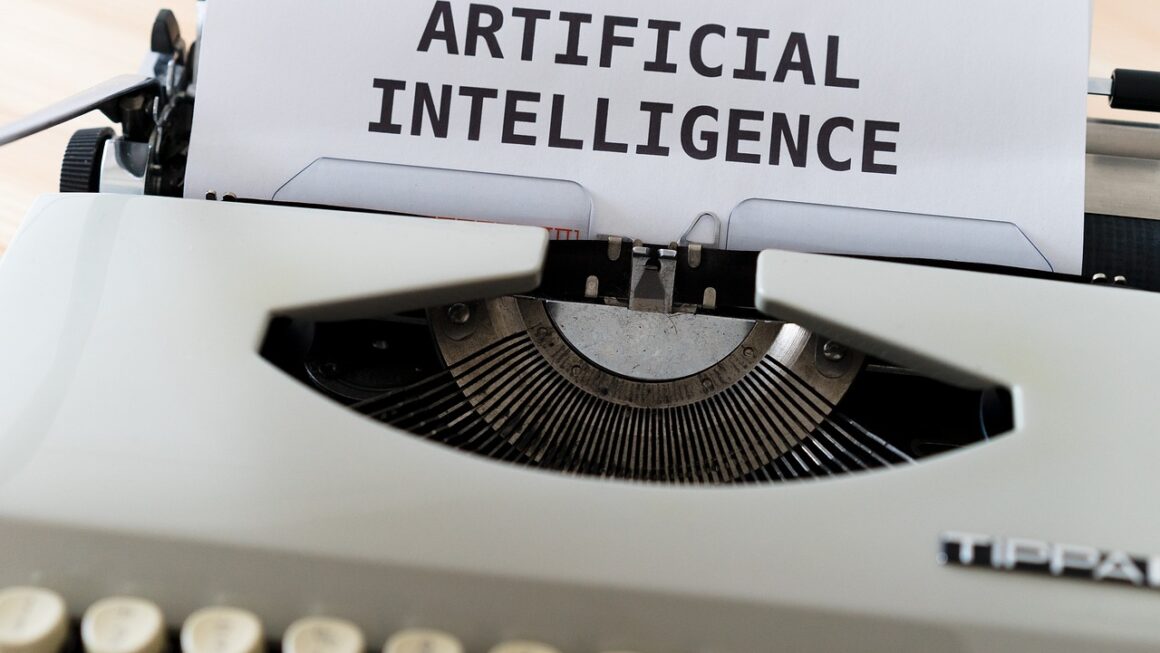The relentless pursuit of efficiency is a hallmark of modern work. We’re constantly seeking ways to streamline processes, reduce wasted time, and ultimately, achieve more with less. Artificial Intelligence (AI) is rapidly emerging as a powerful ally in this quest, offering a suite of tools and techniques that can dramatically boost productivity across various industries and roles. From automating mundane tasks to providing intelligent insights, AI productivity tools are reshaping how we work and paving the way for a more efficient and fulfilling future. Let’s dive into how you can harness the power of AI to unlock your own productivity potential.
Understanding the Landscape of AI Productivity
What is AI Productivity?
AI productivity refers to the use of artificial intelligence technologies to enhance efficiency and effectiveness in various tasks and processes. This can range from automating repetitive manual work to providing data-driven insights that improve decision-making. Essentially, AI productivity aims to free up human workers to focus on more strategic and creative endeavors.
- Automation: Automating repetitive tasks to save time and reduce errors.
- Data Analysis: Quickly analyze large datasets to identify trends and insights.
- Decision Support: Providing recommendations and predictions to aid in decision-making.
- Personalization: Tailoring tools and workflows to individual user needs and preferences.
Key Benefits of Implementing AI Productivity Tools
Integrating AI into your workflow can unlock a multitude of benefits, leading to significant improvements in output and overall business performance. Here are some key advantages:
- Increased Efficiency: Automating repetitive tasks frees up employees to focus on more complex and strategic work.
- Reduced Errors: AI algorithms can perform tasks with greater accuracy than humans, minimizing errors and improving quality.
- Improved Decision-Making: AI-powered analytics provide data-driven insights, enabling better-informed decisions.
- Enhanced Customer Experience: AI-powered chatbots and personalization can improve customer service and satisfaction.
- Cost Savings: Automation and efficiency gains can lead to significant cost savings in the long run.
- Competitive Advantage: Companies that effectively leverage AI productivity tools gain a competitive edge by optimizing operations and innovation.
AI-Powered Tools for Enhanced Productivity
AI-Driven Project Management
Project management is often plagued by scheduling conflicts, resource allocation issues, and communication breakdowns. AI tools are revolutionizing this field by providing intelligent solutions to these challenges.
- AI-Powered Scheduling: Tools like Forecast and Asana use AI to optimize project timelines, taking into account resource availability, task dependencies, and potential bottlenecks. This results in more realistic and efficient schedules.
- Intelligent Task Assignment: Platforms such as Jira and Trello integrate AI to suggest optimal task assignments based on team member skills, workload, and past performance. This ensures that tasks are assigned to the most suitable individuals.
- Risk Assessment and Mitigation: AI algorithms can analyze project data to identify potential risks and suggest mitigation strategies. This helps project managers proactively address challenges before they escalate.
Example: An AI-powered risk assessment tool might flag a dependency between two tasks that are assigned to different teams with known communication challenges, prompting the project manager to implement a communication protocol.
AI for Communication and Collaboration
Effective communication is crucial for productivity, yet it can be a significant time sink. AI is streamlining communication and collaboration processes, allowing teams to stay connected and informed without being overwhelmed by information overload.
- AI-Powered Email Management: Tools like Superhuman and Gmail Smart Compose use AI to prioritize emails, suggest responses, and automate repetitive email tasks. This helps users manage their inbox more efficiently and respond to important messages faster.
- Smart Meeting Assistants: Otter.ai and Fireflies.ai use AI to transcribe meetings, generate summaries, and identify action items. This saves time on note-taking and ensures that everyone is on the same page.
- AI-Driven Translation: Real-time translation tools like Google Translate and Microsoft Translator enable seamless communication between individuals who speak different languages. This is particularly useful for global teams and international collaborations.
Content Creation and Automation with AI
AI is transforming the content creation landscape, empowering individuals and teams to produce high-quality content faster and more efficiently.
- AI Writing Assistants: Tools such as Grammarly and Jasper.ai use AI to help users write clear, concise, and engaging content. They can assist with grammar, spelling, style, and even generate ideas and outlines.
- Automated Content Generation: Platforms like Articoolo and Copy.ai can generate articles, blog posts, and marketing copy based on user-provided keywords and topics. This can save significant time and effort on content creation.
- Image and Video Editing: AI-powered image and video editing tools like Adobe Sensei can automate tasks such as object removal, background replacement, and color correction. This simplifies the editing process and allows creators to focus on more creative aspects.
Example: Using an AI-powered tool to remove a distracting element from a product photo, or to automatically generate subtitles for a video.
Implementing AI Productivity Tools: A Practical Guide
Identifying Areas for Improvement
Before implementing any AI productivity tools, it’s crucial to identify the specific areas where AI can have the biggest impact.
- Analyze Workflows: Identify repetitive tasks, bottlenecks, and areas where errors are common.
- Gather Data: Collect data on time spent on different tasks, error rates, and customer satisfaction.
- Set Goals: Define clear and measurable goals for AI implementation, such as reducing task completion time or improving accuracy.
Choosing the Right Tools
Selecting the right AI productivity tools is essential for success. Consider the following factors:
- Specific Needs: Choose tools that address your specific needs and pain points.
- Integration: Ensure that the tools integrate seamlessly with your existing systems and workflows.
- Ease of Use: Opt for tools that are user-friendly and require minimal training.
- Scalability: Select tools that can scale with your business as your needs evolve.
- Cost: Evaluate the cost of the tools and ensure that they provide a positive return on investment (ROI).
Training and Adoption
Effective training and adoption are critical for successful AI implementation.
- Provide Training: Offer comprehensive training to employees on how to use the new AI tools.
- Encourage Experimentation: Encourage employees to experiment with the tools and explore their capabilities.
- Provide Support: Offer ongoing support and guidance to help employees overcome challenges.
- Celebrate Successes: Recognize and celebrate successes to encourage continued adoption.
Addressing Challenges and Concerns
Data Privacy and Security
AI relies on data, so ensuring data privacy and security is paramount.
- Compliance: Ensure that your AI tools comply with relevant data privacy regulations, such as GDPR and CCPA.
- Data Encryption: Implement data encryption to protect sensitive information from unauthorized access.
- Access Controls: Restrict access to data based on roles and responsibilities.
- Transparency: Be transparent with users about how their data is being used.
Job Displacement
A common concern is the potential for AI to displace human workers.
- Focus on Augmentation: Emphasize how AI can augment human capabilities rather than replace them.
- Retraining and Upskilling: Provide retraining and upskilling opportunities for employees to adapt to new roles.
- Create New Opportunities: Explore new business opportunities that arise from AI implementation.
- Strategic Workforce Planning: Develop a strategic workforce plan that anticipates the impact of AI on the labor market.
Ethical Considerations
AI raises ethical concerns that need to be addressed.
- Bias: Ensure that AI algorithms are free from bias to avoid discriminatory outcomes.
- Transparency: Promote transparency in AI decision-making processes.
- Accountability: Establish clear lines of accountability for AI-driven decisions.
- Ethical Framework: Develop an ethical framework for AI development and deployment.
Conclusion
AI productivity tools are transforming the way we work, offering unparalleled opportunities to enhance efficiency, improve decision-making, and boost overall productivity. By understanding the landscape of AI productivity, implementing the right tools, and addressing potential challenges, individuals and organizations can unlock the full potential of AI and create a more efficient, fulfilling, and innovative future. The key is to approach AI not as a replacement for human effort, but as a powerful partner capable of augmenting our abilities and empowering us to achieve more than ever before. Embrace the possibilities, experiment with different tools, and embark on the journey to a more productive and AI-powered future.




